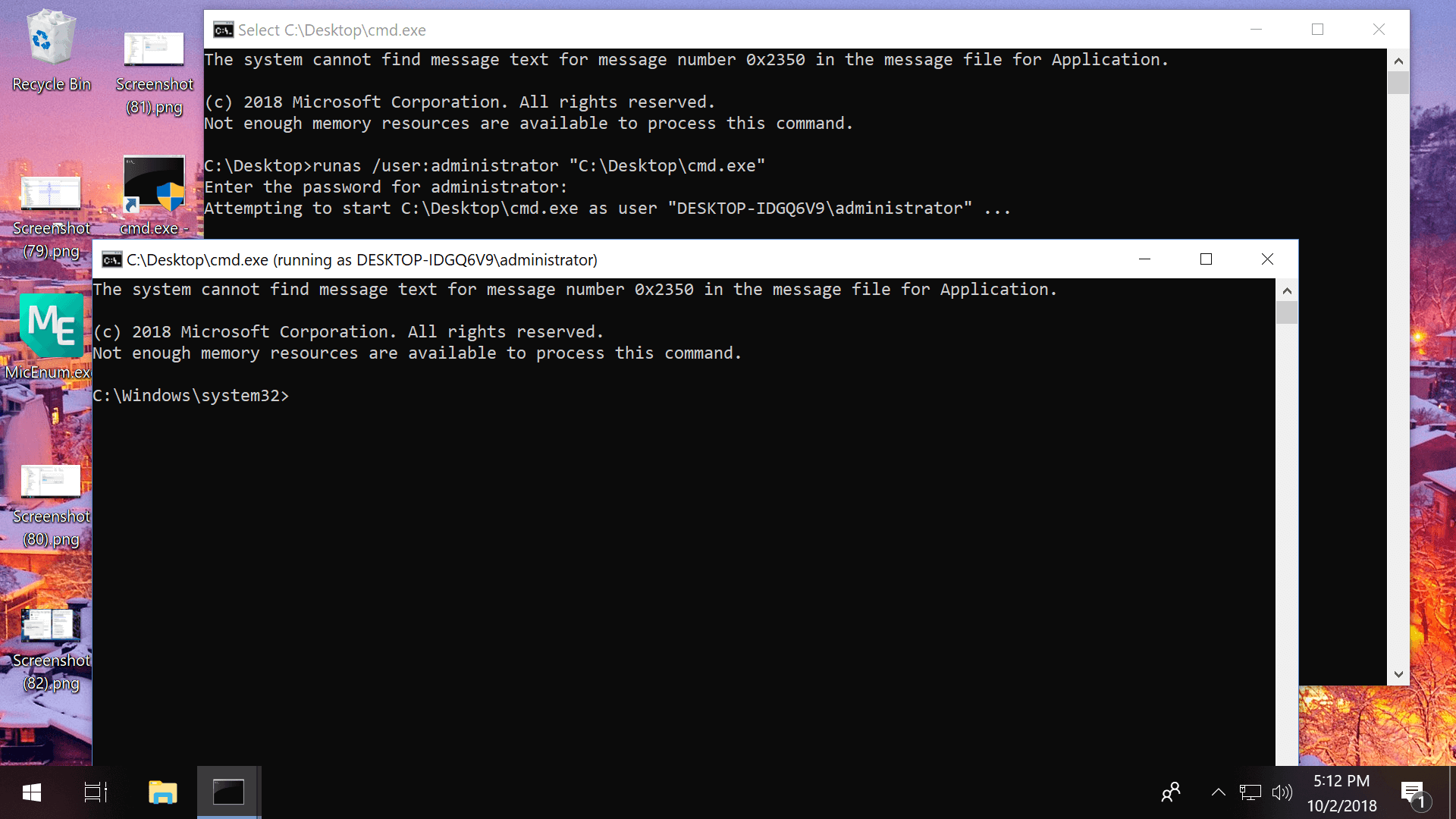

- #Run exe on mac administrator how to
- #Run exe on mac administrator .exe
- #Run exe on mac administrator install
- #Run exe on mac administrator full
- #Run exe on mac administrator windows 10
Then choose - Add Compatibility Option -> Run As Invoker.

#Run exe on mac administrator .exe
exe file by dragging it to the AppCompatibilityView window and You can use the AppCompatibilityView tool if you want to always.You have to choose 'Current User - Without UAC Elevation' You can use the AdvancedRun tool - in the 'Run As' combo-box.You can set the _COMPAT_LAYER variable to RunAsInvoker and then run the desired program, for example:Ĭmd.exe /c "set _COMPAT_LAYER=RunAsInvoker & regedit.exe".Here's 4 different ways to run a program without elevation: However, it's possible to force a program that requires elevation to run without elevation. In the “More” menu, select “Run as administrator.There are some programs that by default requires from the user to execute them with Administrator privileges (Also known as Elevation or 'Run As Administrator').įor example, RegEdit.exe of Windows operating system always requires to run it as Administrator. Now, go back to solution explorer and under the project, find the. In the Add New Item window, select Application Manifest File and press Add. Right-click the app’s icon, then select “More” from the menu that appears. Go to Visual Studio Solution Explorer, right-click the project and select Add > New Item.
#Run exe on mac administrator windows 10
If you’d like to run a Windows 10 app as an administrator, open the Start menu and locate the app on the list. RELATED: Why (Most) Desktop Apps Aren't Available in the Windows Store How Do I Run Apps as an Administrator?
#Run exe on mac administrator install
To do so, you can either install WINE, which is free software, or install Windows 8 or 10 using your Mac's Boot Camp feature.
#Run exe on mac administrator how to
UWP (Universal Windows Platform) apps-like those downloaded from the Microsoft Store-cannot be run as an administrator. This wikiHow teaches you how to run Windows' executable (EXE) files on a Mac. Traditionally, that means apps created for Windows 7 and earlier, but many modern Windows apps are still maintained that way. Only apps programmed for the legacy Win32 and Win64 APIs can be run as an administrator. This is particularly the case with utility programs that may require deep access to perform diagnostics on your file system, configure storage devices, or change the settings of certain devices installed in your system. Follow this answer to receive notifications. There you go every time you access via shortcut it will open as administrator. If an app isn’t working as you would expect it to, you might want to run it as an administrator and see if that clears up the problem. Workaround: Create a shortcut to your script. RELATED: Enable the (Hidden) Administrator Account on Windows 7, 8, or 10 When Should I Run Apps as an Administrator? (If you’d like to read more about the technical aspects of how the administrator account works, this Stack Overflow thread is very helpful.) This brings potential dangers, but it is also sometimes necessary for certain programs to work correctly. So when you run an app as an administrator, it means you are giving the app special permissions to access restricted parts of your Windows 10 system that would otherwise be off-limits.
#Run exe on mac administrator full
When you use “Run as Administrator,” UAC gets out of the way, and the application is run with full administrator access to everything on your system. User Account Control (UAC) limits the permissions that applications have, even when you launch them from an administrator account. In fact, that’s bad for security-your web browser shouldn’t have full access to your entire operating system. If you have other accounts set up on your Windows 10 PC, you can head to Settings > Accounts > Family & other users to see if they’re administrators.)īut even if you are using an administrator account on Windows, not every application needs full administrator permissions. You’ll see “Administrator” below your name here if you’re an administrator. (You can check your administrator status by heading to Settings > Accounts > Your Info. If you own your own PC and it isn’t managed by your workplace, you’re probably using an administrator account. The purpose of an administrator role is to allow changes to certain aspects of your operating system that might otherwise become damaged by accident (or through malicious action) by a normal user account. (There’s also a hidden account named “Administrator,” but any account can be an administrator.) Administrator accounts can configure system settings and access normally restricted parts of the operating system. There are two types of accounts in Windows: Standard user accounts and Administrator user accounts.


 0 kommentar(er)
0 kommentar(er)
